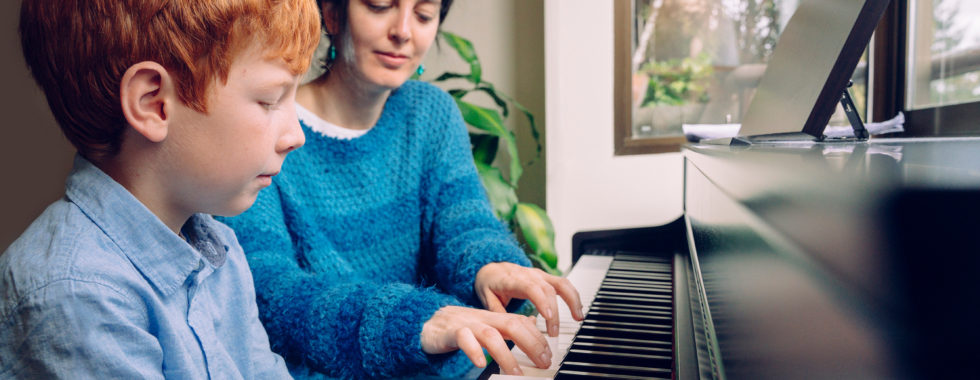The Struggling Student and a Whole Person Approach to Music Education
My name is Amie Webster and I am an enthusiastic online music teacher from Vancouver Island. I work alongside a tremendous team of educators at Motif Music Studios.
I am also a music teacher of 23 years married to an incredibly patient husband who’s heard me verbally process these ideas for well over a decade. We are also the parents of three wonderfully wild, unique boys under seven years old and they constantly challenge us to rethink the norms of both parenting and education.
I’ve always been interested in the way people learn. Even as a teen I would read books like, “The Way They Learn” by Cynthia Tobias.
I was still inquisitive, compassionate and each student I encountered taught me something different.
Yes, I was 16, a homeschooler and had no TV or “interwebs”. Although I didn’t have the tools I have now, when I started teaching at 17 years old, I was still inquisitive, compassionate and each student I encountered taught me something different.
Please note the opinions below are my own and not intended as medical or therapeutic advice. I do give credit to many brilliant minds along the way that I have had opportunity to learn from and I mention them when quoted.
There’s beauty in the cracks, the rough edges, the uneven footing, the often times uncertain places we find ourselves as educators.
Dr. Wayne Dyer is quoted as saying, “Change the way you look at things, and the things you look at change.”
Perhaps you are working alongside a learner that is checking their beautifully unique boxes in a timeline completely their own, or you could be brainstorming on behalf of a student that is displaying discomfort or resistance in music lessons. As an educator (or parent) these spaces of learning alongside each other could be filled with curiosity, but you may also feel overwhelmed or underprepared when presented with a more complex situation at home or with you studio or classroom.
Each student that comes to us as educators comes complete with a unique sensory profile, their own autonomic nervous system and varying levels of regulation in each lesson. I believe our role as an educator is to guide students with wide-eyed curiosity as to how best to support them in their individual learning journey.
A whole person approach to music learning looks beyond visible ‘behaviours’ and begins to uncover the ‘whys’ that are beneath the surface.
Mona Delahooke, PhD, ponders this aloud in her book, “Beyond Behaviours” and says,
I often wonder about [the conflicting messages] we give to children about their bodies’ adaptations when we ask them to “quiet” their hands or bodies or otherwise conform behaviourally. What happens to their nervous systems (positively or negatively) when we ask them to stop an action that their body is instructing them to do.
So, where does this leave us as curious, willing music educators (or caregivers) tasked to create opportunity for music growth alongside human connection?
I would like to suggest the following as a way to start viewing the whole person alongside teaching music.
Stay Curious
Does the behaviour serve the individual student in any way?
Behaviours most often DO serve the child, but it can take much patience and gentle exploration to uncover the ‘whys’.
For example, if you have a student that is naturally wiggly on the bench, instincts may have us want to ‘still’ this chaotic behaviour. An inquisitive approach might wonder if their body is asking them to move.
Have they had opportunity to use the washroom, are they struggling with balance on the bench, are they overwhelmed at the task at hand and could their body be telling them to move away from even the most subtle of pressures?
When does the visible behaviour emerge and what are the variables?
Is the highlighted behaviour a constant in music practice and lessons or is it appearing in predictable intervals and triggered by the request for a certain aspect of music lessons or during a transition between activities?
You may be surprised at how many behaviours actually do serve an adaptive purpose.
Here are some other examples to get you started as you begin the empathy step in observing “Behaviour as Communication” (thanks, Ross Greene).
Resistance
This is an important flag for teachers to listen to and it can speak to many layers beneath the surface. Not only is resistance a way for students to have autonomy, it also can be a reactive state (fight / flight / freeze) and their bodies may be giving them mixed messages about their readiness to learn in that moment.
Busy Bodies
Only once we start observing the behaviours in a questioning way can we truly support the learner without suppressing behaviours that are indeed the path to a more regulated learner.
I am sure many of us have witnessed this is in music lessons. Perhaps your student is tumbling on or off the piano bench, struggles with when those fingers (or toes) start playing those keys, starts doing laps of a studio room or classroom, or their body movements are big and bold or quick and unpredictable.
This is also an adaptive response and support will look different depending on the student. Only once we start observing the behaviours in a questioning way can truly support the learner without suppressing behaviours that are indeed the path to a more regulated learner.
This questioning step is just the first in many, but being willing to sit in this (sometimes uncomfortable) space awhile and observe behaviour with a compassionate heart and an inquiring mind is a step that will give room for a beautiful path forward as you work collaboratively with students and families to bring joy through music learning.
If this topic is of interest to you, I would love to hear from you in the comments below.
Here are some definitions of concepts I mentioned above, for easy reference.
Sensory Profile | The way each individual senses and experiences the world around them.
Autonomic Nervous System | The autonomic nervous system is a control system that acts on the behalf of individuals to regulate body functions such as heart rate, digestion, respiratory rate among many other systems and is also the primary mechanism in control of fight / flight / freeze mechanisms.
Regulation | The ability for the brain and body to work together to maintain a regulated state that provides opportunity for learning.
Please note: The opinions above are my own and are not intended as medical or therapeutic advice. I do give credit to the many brilliant minds I have had opportunity to learn from and mention them when quoted.

